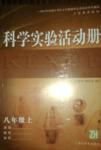题目内容
【题目】Mr..Brown is my uncle.He is 36___________ old.He works in sports club.His job is to_________ the students to play basketball.He___________ far from the club.He has a car,but he doesn’t ___________ it to work.Usually,he goes to work ___________ bike.He thinks it is good ___________ and he can get to the club early when many buses and cars are in the street.
Every morning,Mr.Brown gets up at 6:30.Then he takes a shower and has ___________ good breakfast.At 7:40,he ___________ his bike to the club.The bike ride usually ___________ an hour.“I never feel tired.I think the ride is ____________ and interesting,”says Mr.Brown.
【1】A. days B. weeks C. months D. years
【2】A. ask B. join C. teach D. think
【3】A. lives B. gets C. makes D. watches
【4】A. buy B. find C. play D. drive
【5】A. by B. on C. in D. with
【6】A. subject B. exercise C. food D. dream
【7】A. a B. an C. the D. /
【8】A. takes B. gets C. rides D. sees
【9】A. sells B. finishes C. wants D. takes
【10】A. boring B. relaxing C. difficult D. busy
【答案】
【1】D
【2】C
【3】A
【4】D
【5】A
【6】B
【7】A
【8】C
【9】D
【10】B
【解析】这篇短文主要介绍了作者的叔叔在一个运动俱乐部教学生打篮球,他经常骑自行车去上班,他认为这种方式既有趣又放松。
【1】考查名词及语境的理解。A. days 日; B. weeks 周; C. months月; D. years年,岁。根据布朗先生是我的叔叔,可知是三十六岁,故选D。
【2】考查动词及语境的理解。A. ask 问; B. join参加; C. teach教; D. think认为。他的工作是交给学生们打篮球。结合句意,故选C。
【3】考查动词及语境的理解。A. lives 居住; B. gets获得;C. makes 制作; D. watches观看。他住的离俱乐部远。结合句意,故选A。
【4】考查动词及语境的理解。A. buy 买; B. find发现,找到;C. play 玩; D. drive驾驶。他有一辆汽车,但是他不开着去上班。结合句意,故选D。
【5】考查介词及语境的理解。A. by乘; B. on在……上; C. in 在……里; D. with和,用。by 直接加交通工具;on/in+冠词(人称代词)+交通工具。他骑自行车去上班。结合句意及结构,故选A。
【6】考查名词及语境的理解。A. subject 科目; B. exercise 锻炼;练习; C. food食物; D. dream梦想。他认为那是很好的锻炼。根据上下文及句意,故选B。
【7】考查冠词及语境的理解。三餐前面一般情况不加冠词,但是如果其前有形容词修饰,可知加不定冠词a(an),根据good以辅音音素开头,故选A。
【8】考查动词及语境的理解。A. takes乘,带走; B. gets获得; C. rides 骑; D. sees看到。在七点四十他骑着他的自行车去俱乐部。结合句意,故选C。
【9】考查动词及语境的理解。A. sells 买; B. finishes完成; C. wants想要; D. takes花费,事物做主语,花费时间。自行车行驶通常花费一个小时的时间。结合句意,故选D。
【10】考查形容词词及语境的理解。A. boring 无聊的; B. relaxing放松的; C. difficult 困难的; D. busy繁忙的。我认为骑自行车时放松而有趣的。结合上文及句意,故选B。

 科学实验活动册系列答案
科学实验活动册系列答案【题目】Have you ever wondered what an American high school is really like? This article will describe a typical (典型的)high school and its students.
A typical American high school has several large buildings and enough space for about l, 500 students. Every student is given a locker. When students first arrive at school, they go straight to their lockers to put away or get their textbooks and to hang up their outdoor clothes. As American textbooks are expensive, students would rather loan (租借)than buy them. Students must pay back if they lose any of them.
American students have different types of school transport. They usually take a yellow school bus or walk to school if they live close enough. Sometimes their parents drive them to school. When they turn 16 years of age, most take a free driving class at school for one term. If students earn passing grades in the class and also pass their state driver's exam, they can begin driving themselves to school.
Each day, students take six or seven classes. They must take science, math, English and social studies. They can choose art, homemaking, fashion design and other classes. In some schools students are required to take one or more of the following special classes: health education, physical education or foreign language studies. Students move to different classrooms for each subject. This is because each teacher has their own classroom. There is a five-minute break between classes, to give the students the time to hurry to their next class.
The regular school day usually ends early in the afternoon. After school more than half of the students are involved in after-school activities. These activities include sports-especially football, basketball, baseball and soccer or clubs, such as yearbook, speech, school newspaper, photograph or student government.
Title: 【1】 in an American High School
Outline | Details |
Introduction | ◇It gives an overview of a typical American high school and its 【2】 |
Lockers and textbooks | ◇Every student has a locker for textbooks and 【3】clothes. ◇They prefer loaning textbooks to 【4】 them. |
【5】transport | ◇Students usually go to school by bus or on foot. Sometimes their 【6】 sent them to school by car. ◇They can 【7】 themselves to school when they are over 16 and have passed the required tests. |
Classes and classrooms | ◇Students have to take main classes, elective classes and sometimes one or more 【8】 classes. ◇They go to 【9】classrooms for each subject. |
After-school activities | ◇After school most of the students take 【10】in their favorite activities, including sports and clubs. |
九、书面表达